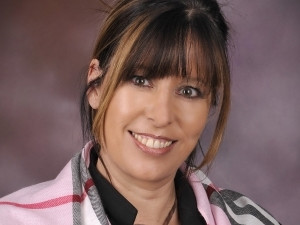
With technology entrenched in practically every aspect of our daily lives, it makes sense that the health industry is embracing the use of technology to improve patient safety and minimise human error.
So says Janine McEwan, Zebra Technologies territory manager, who notes that a significant number of adverse drug incidents in South African hospitals every year can be attributed to human error, which is why the adoption of barcode technology has become so critical.
According to the World Health Organization (WHO), more than 50% of all countries do not implement basic policies to promote rational use of medicines; and in developing countries, less than 40% of patients in the public sector and 30% in the private sector are treated according to clinical guidelines, says McEwan.
Safe medication admin
She points out that safe medication administration is underpinned by the principle of the "five rights" - right medication, right dose, right time, right patient and right route. "When implemented properly, barcode solutions can significantly improve the success rate of this process and enhance patient care at the bedside."
McEwan adds that with the benefits of new technologies and tools aimed at improving healthcare having come under the spotlight at the South African Medical Device Industry Association (SAMED] and Health Africa conferences held in Gauteng last month, there is merit in exploring how patient barcode solutions are taking medical technology to the next level.
Of all the medical technologies being developed, barcode solutions have climbed to the top of industry list due to their relative ease of implementation, demonstrated return on investment and broad array of applications, she says.
"Simply put, barcode technology eliminates the need for traditional keyboard data entry. It requires conversion of an identifier to a symbolic representation namely, the barcode. The barcode can then be printed on or affixed to an item and subsequently read by a light source and fed into a computer."
Barcode solutions can be used in a variety of healthcare applications, including producing hospital wristbands and labelling for pharmaceutical unit-dose medications, IV mixtures, lab and pathology specimens, blood products, asset tags, file labels and more, she reveals.
Pharmaceutical companies can locate and track each dose of medication produced in vast batches; hospitals can monitor and utilise equipment with greater efficiency; and healthcare staff can create and maintain healthcare records more efficiently, she adds.
"The rate of accuracy at which information can be captured is exceptional. Barcode scanning equipment is much faster than the human eye and notably more accurate. When tested, barcode scanners were proven to have an accuracy rate of one error per 10 000 000 characters. By comparison, keyboard entry error rates of one error per 100 characters were noted."
Small start
In SA, she says, barcode solutions are starting to be embraced, albeit on a very small scale currently; however, many local medical institutions are at the forefront of exploring the full functionality of adopting and implementing barcode technology solutions.
McEwan is sure that adoption will grow. "With the implementation of global barcoding standardisation and WHO drivers, there is strong view that patient safety is a fundamental principle of healthcare, encouraging support for this principle globally.
"Taking into account that barcode scanning is extremely accurate; in fact, much more accurate than any manual means of information recording. The error rate for barcode data entry is less than one per three million scans."
She notes that the Department of Health in the UK alone has announced it wants all products supplied to the NHS to carry barcodes compliant to the GS1 UK standard by the end of next year. Barcoding standardisation will cover all products manufactured for the NHS, including surgical equipment, patient wristbands and drugs, she adds.
"To implement the same in South Africa can only improve patient safety and reduce the risks of mis-identification and the errors in care associated with this," she concludes.
Share